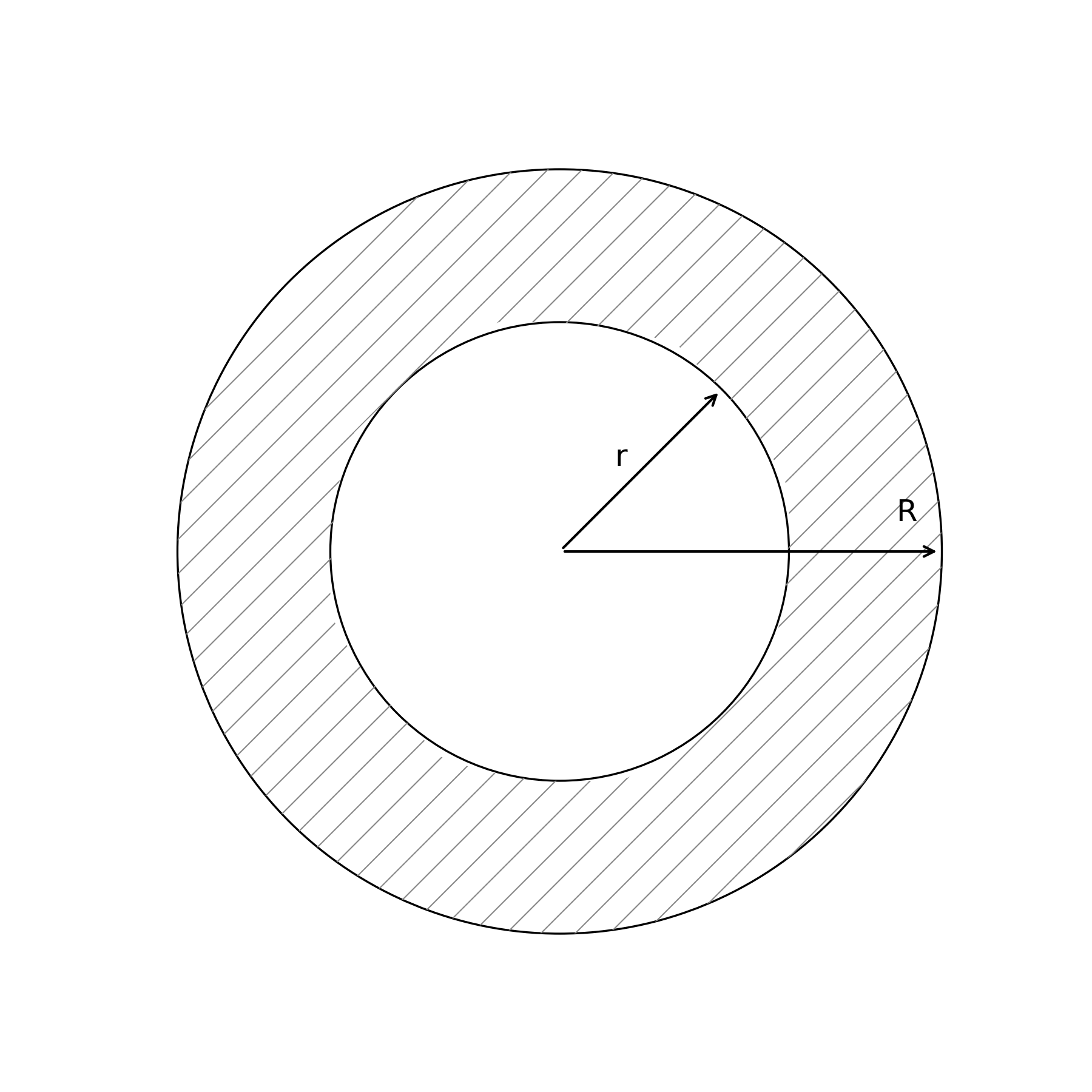Annulus
An annulus is a figure that arises when a large circle is taken and a smaller circle with the same center is removed. The figure therefore resembles a disc or a ring.

When calculating an annulus, you need at least two pieces of information, e.g. both radii or circumferences, and you need to know Pi \( \large \pi \).
An annulus consists of two circles and therefore has two radii.
The radius of the smaller circle is called the inner radius \( \large r \), and the radius of the larger circle is called the outer radius \( \large R \).
If you want to calculate the area of the annulus, you must subtract the area of the inner circle from the area of the outer circle.
In addition to the area, you can also work with the circumference. An annulus has two circumferences, namely the outer and the inner. These are often used if you need to find the length of a ring or the surface of a cylindrical band, where the annulus forms the top or bottom.
A classic example of an annulus is a coin with a hole in the middle. Other examples are gaskets, ring-shaped discs in mechanics, and decorative elements in architecture. In all cases, you need to know the area or the dimensions of the ring itself.
In some situations, you know the area of the annulus and one radius, but lack the other. Here you can work backwards with the formula and isolate the unknown radius. In this way, you can determine both the inner and the outer radius from the available information.
The annulus therefore appears in many practical contexts, e.g. in construction, engineering and design. In calculations, it is treated as an ordinary circle, only with two radii instead of one.